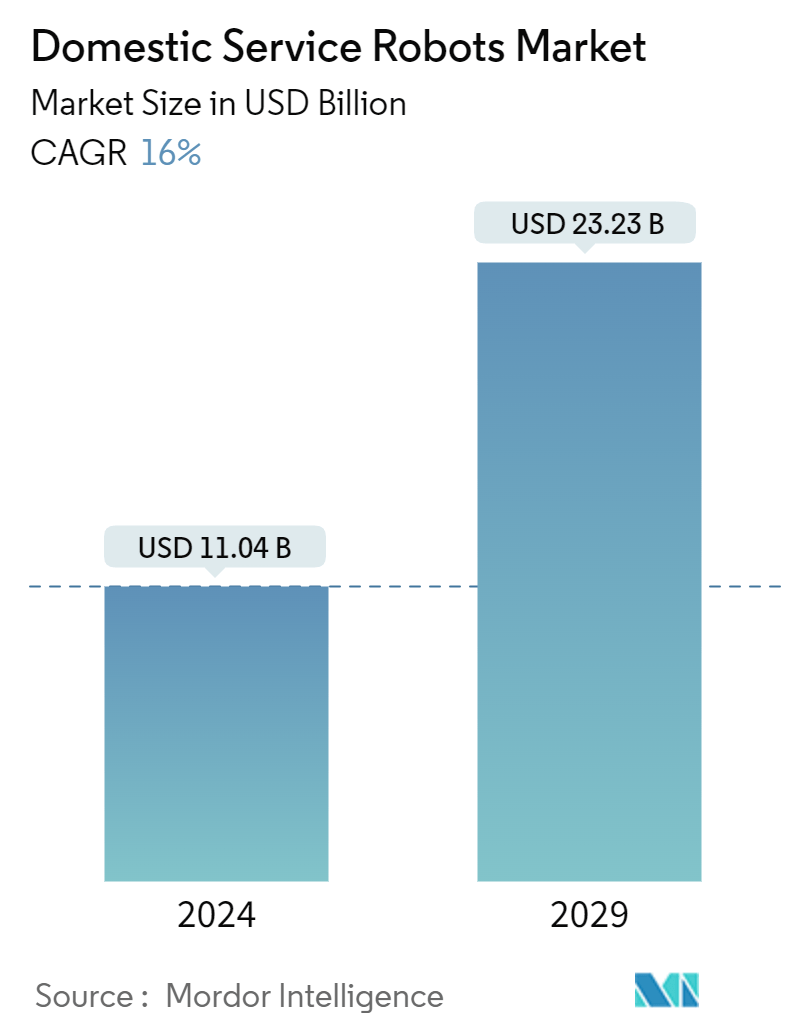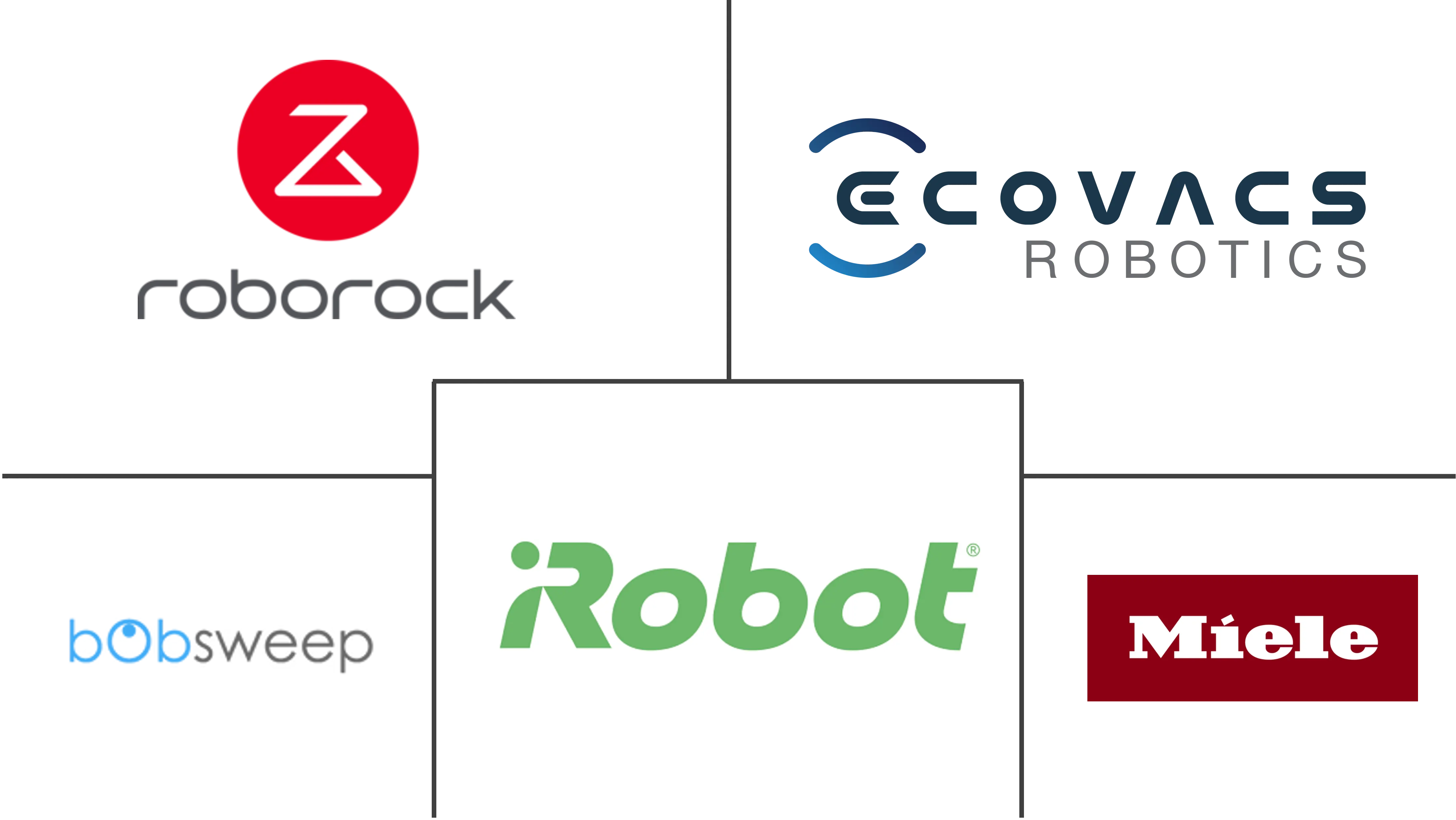Market Size of Domestic Service Robots Industry

| Study Period | 2019 - 2029 |
| Market Size (2024) | USD 11.04 Billion |
| Market Size (2029) | USD 23.23 Billion |
| CAGR (2024 - 2029) | 16.00 % |
| Fastest Growing Market | Asia Pacific |
| Largest Market | Asia Pacific |
Major Players
*Disclaimer: Major Players sorted in no particular order |
Domestic Service Robots Market Analysis
The Domestic Service Robots Market size is estimated at USD 11.04 billion in 2024, and is expected to reach USD 23.23 billion by 2029, growing at a CAGR of 16% during the forecast period (2024-2029).
- Domestic robots are electronic robotic devices created to assist with various household tasks. These robots are specifically designed to offer companionship to older people, supervise young children, and operate kitchen appliances. They also aid in cleaning the home. Utilizing sensors, the robot can detect furniture and other objects in its path, adjusting its course accordingly. Furthermore, these robots are compact and straightforward, requiring only a fraction of the storage space typically used by traditional vacuum cleaners.
- The demand for domestic robots has seen a substantial rise, largely due to their capacity to manage multiple tasks efficiently, carry out tasks with precision, and address increasing safety concerns. Domestic robots are known for their reliability and require minimal upkeep. With advancements in technology, domestic robots are becoming increasingly valuable in various scenarios, which is anticipated to fuel the expansion of the domestic robots market.
- The ongoing progress in technology concerning interaction, cognition, and manipulation has made domestic robots more appealing for household use, which is anticipated to boost the growth of the domestic robots market. Furthermore, advancements in technology across different sectors, such as cognition, interaction, and manipulation, are enhancing the appeal of household robotics.
- The advancement of technology, along with the integration of Artificial Intelligence (AI) and Big Data systems in robotics, is expected to drive the demand for service robots in the coming years. Following the impact of COVID-19, there is a projected increase in demand for technologically advanced domestic service robots that are durable and well-built, particularly in the domestic sector.
- Robotics has experienced significant advancements in usability and convenience due to technologies like the Simultaneous Localization and Mapping (SLAM) algorithm and Artificial Intelligence. Leading industry players have embraced these innovations to enhance their product offerings. There is a growing demand from consumers for domestic service robots as they seek to minimize or eliminate household chores such as vacuuming, pool cleaning, and mowing.
- Nevertheless, the significant initial investment needed for purchasing, programming, integrating, and acquiring additional accessories poses a considerable challenge to the growth of the domestic service robotics market. Moreover, the expenses related to software upgrades, sensor replacements, and other device maintenance further add to the overall ownership costs of domestic service robots, ultimately hindering market expansion. Therefore, due to these circumstances, there has been a noticeable deceleration in the growth of the domestic service robotics market.

